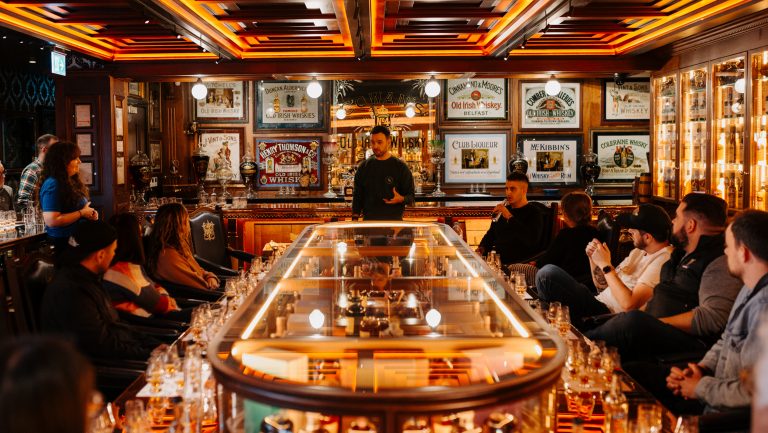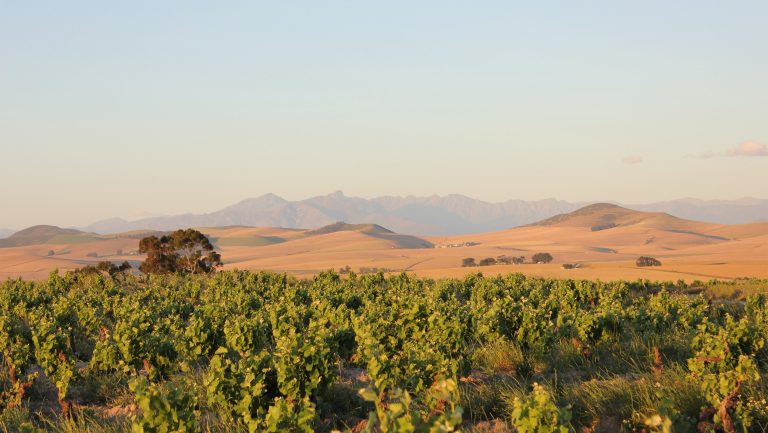Kyushu Island in southern Japan is often overlooked by tourists visiting Japan. Even its main international draw, Nagasaki City, is overshadowed by its more convenient cousin, Hiroshima, a short Shinkansen, or bullet train, ride from Osaka. Kyushu’s regional capital, Fukuoka, is the sixth-largest yet fastest-growing city in Japan, yet it’s almost unknown outside Asia. U.S. consumers have heard of Kumamoto thanks to the oysters and Miyazaki thanks to the eponymous anime director, but the rest of the region is an afterthought.
Tourists should not feel the slightest bit embarrassed by this. Kyushu has also been ignored by most of Japan for most of its history. Only when the Satsuma Domain (modern-day Kagoshima Prefecture) conquered Okinawa in 1609 and became one of the most powerful domains in the country did the Shogun begrudgingly take notice. This oversight proved fatal, as Satsuma ended up leading the rebellion that overthrew the Shogun in 1868, ushering in the modernization of Japan.
Due to its long backwater status, Kyushu’s local drink had also been ignored both in Japan and internationally—until recently. Honkaku (authentic) shochu—a resolutely traditional spirit that must be made using koji mold for saccharification, can only be fermented from approved agricultural ingredients, and passes through a pot still just once—did not become a national drink in Japan until the 1970s. Before that, it was considered blue-collar grog in southern Japan, much like bourbon in America until just a few decades ago.

Don’t miss the latest drinks industry news and insights. Sign up for our award-winning newsletters and get insider intel, resources, and trends delivered to your inbox every week.
But shochu has quietly outsold sake in Japan every year since 2003—and seemingly nobody has noticed. Now, U.S. consumers are finally catching on—and Japan’s best-kept secret seems to be out of the bag.
The Evolution of Honkaku Shochu
With its hot, humid climate, Kyushu is a tough place to make sake, which turns out best when made in cool temperatures. This is why sake making is traditionally a winter activity. The introduction of the pot still to Kyushu from either Okinawa or Korea in the 1400s was a godsend to the locals. Farmers and fishermen throughout the region began distilling their rustic rice fermentation.
Honkaku shochu became so pervasive by the 1600s that the ruling samurai of Nagasaki outlawed the use of rice for alcohol production. Tax payments were made in rice at the time, but it was disappearing up the necks of illicit stills at an alarming pace.
Necessity being the mother of invention, barley shochu was born. Soon after that, sweet potatoes were introduced to Kyushu from Okinawa. It turned out they grew very well in the rocky volcanic soil of southern Kyushu, where rice refused to grow. Within a few decades of their introduction, they were being made into honkaku shochu as well.
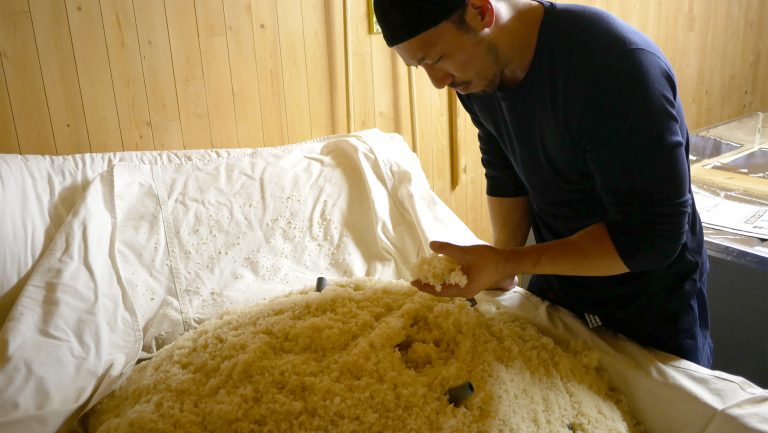
Today, more than 50 base ingredients can be used to make honkaku shochu, which is very much defined by how it’s made rather than what it is made from. Koji, Japan’s national mold, which is used to make sake, soy sauce, miso, and a wide variety of other traditional Japanese culinary staples, must be used to saccharify starches in the production of honkaku shochu. After fermentation, it must be distilled in a pot still, and nothing can be added after distillation other than water and time. As a result, shochu’s aroma profiles are as diverse as the dozens of ingredients used to make it. In terms of flavor, shochu spans the spectrum from earthy, spicy, and funky to soft, ethereal, and sweet.
Nearly all honkaku shochu continues to be made in Kyushu, where there are more than 280 distilleries in an area about half the size of Scotland. Barley shochu dominates in northern Kyushu, rice in Kumamoto, and sweet potato down south in Kagoshima. Industry volume-leading Miyazaki makes all three styles in abundance along with soba (buckwheat) shochu. Kokuto sugar shochu can only be made in the Amami Islands situated between Kyushu and Okinawa.
Meanwhile, sake lees shochu is produced just about everywhere in Japan as a waste management solution for the solids left over after sake production. The resulting shochu lees can then safely be used as fertilizer.
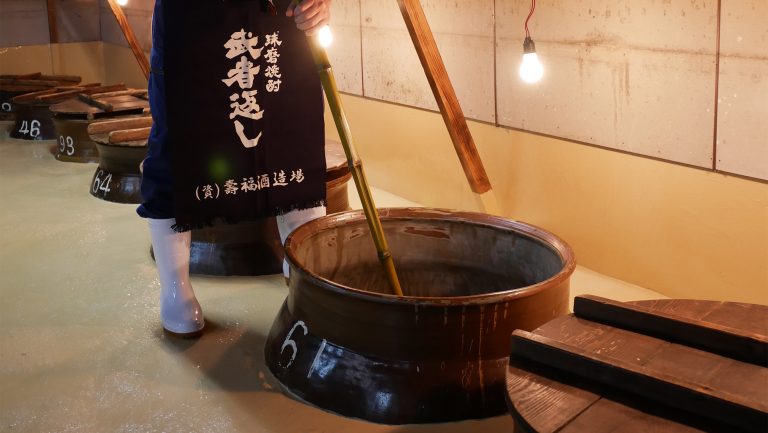
Prime Time for Shochu in the U.S. Market
In light of shochu’s history and current domestic dominance, how has this diverse spirits category fared in the U.S.? Until very recently, not particularly well. A gaggle of factors has conspired to slow shochu’s uptake in America.
Primary among them is the fact that most Japanese shochu is distributed through large Japanese food importers. When the sales team needs to hit beverage alcohol quotas, it has historically been much easier to lean on sake rather than put in the extra effort to educate people about shochu.
California soft liquor license statutes have been a hindrance as well. Thanks to lobbying, in 1998 California began allowing restaurants with beer-and-wine licenses to also sell spirits under 25% ABV, as long as “soju” appears on the label. Subsequently, many Japanese shochu makers have opportunistically mislabeled their products as soju, the Korean spirit with a similar-sounding name but very different production methods. To loophole their spirits into Golden State restaurants, Japanese shochu makers dilute products to 24% ABV from Japan’s standard 25% and print “soju” on the label, guaranteeing extra sales and generations of misinformed consumers.
That doesn’t just happen in California. The same mislabeled bottles appear on liquor store shelves nationwide, so most Americans conflate the two drinks. It is difficult to overstate how debilitating this has been for shochu’s progress in the U.S. market, with koji-fermented, single-pot-distilled shochu being mistaken for what is essentially low-proof sweetened vodka.
But things are looking up. Crucially, a raft of other drink categories—notably mezcal—has found footing in the U.S. while shochu has patiently waited in the wings. Low and behold, consumers now see that clear spirits can be nuanced and enjoyed on their own.
As consumers seek out different expressions from across Mexico, the trend towards mezcal also indicates that the notion of terroir has found its way back into the spirits conversation. The U.S. was already the largest mezcal market by 2019 and is projected to represent 65 percent of world consumption within the next several years.
Complementary to this is the continued enthusiasm generated by the natural wine movement and how its adherents have assiduously broadened their palates to accommodate new flavor and aroma profiles. Last March, Nielsen data indicated that the past four years saw a greater than 500 percent increase in the value of biodynamic and organic wines sold off-premise in the U.S. The rapid growth mirrors the shift in mezcal from worm-addled rotgut to a premium tipple in fine establishments across the country. Could it finally be that American drinkers are ready for something Japan has been saving mainly for itself?
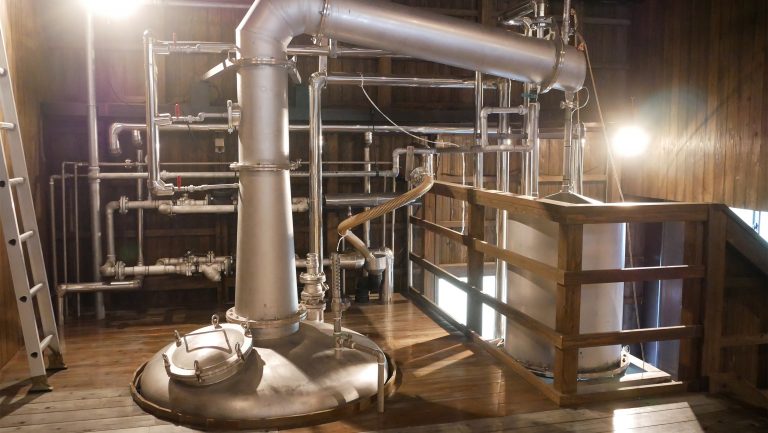
Fortunately, there is now a crop of importers, some in business well before the pandemic. They are both singly focused on koji spirits and ready to expend human and financial resources to get the branding, marketing, and education right. Our experiences preaching the shochu gospel in the U.S. have us excited about what the future holds for the category.
A few short years ago, it wasn’t easy to get people to sample honkaku shochu in the U.S. And we tried! But Bar Convent Brooklyn 2021 was a revelatory experience; people were seeking us out. After guided tastings, there were quite a few minds blown and identities self-questioned. “How did I not know about this?!” was an oft-heard refrain. The follow-up was frequently, “Who are you distributed through?”
Thousands of honkaku shochu brands are brewed, distilled, aged, and sold in Japan every year. The wide range of permitted ingredients plus a single pass through a pot still means that it’s the most diverse spirits category on the planet. It’s as central to Japan’s culinary culture as any other drink produced domestically, and it’s starting to show up on menus in serious cocktail bars in the States. We are optimistic that shochu will not remain Japan’s best-kept secret much longer.

Dispatch
Sign up for our award-winning newsletter
Don’t miss the latest drinks industry news and insights—delivered to your inbox every week.
Stephen Lyman is the author of the James Beard Award nominated The Complete Guide to Japanese Drinks. Currently based in Fukuoka, Japan, he is working on a shochu documentary, helps make handmade sweet potato shochu at Yamato Zakura Distillery every fall, and has been designated a Honkaku Shochu and Ryukyu Awamori Ambassador by the Japanese Cabinet Office. His deep appreciation for koji-based spirits inspired him to help launch Honkaku Spirits. He did this with one goal in mind: to realize his dream of being able to enjoy shochu and awamori in every bar in America.
Christopher Pellegrini discovered shochu and awamori after moving to Tokyo as a full-time professor at Waseda University. In 2014, he published the first ever English language guide to shochu and awamori, The Shochu Handbook. He also contributed to The Oxford Companion to Spirits & Cocktails, published in 2021. Christopher launched Honkaku Spirits in March 2020 with the mission of bringing intensely artisanal Japanese spirits to discerning consumers worldwide. He also co-hosts two podcasts focused on the education of Japanese spirits: Japan Distilled and Sake on Air. He is fluent in English and Japanese (conversational in Spanish and Korean).




